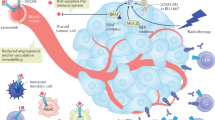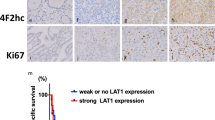Abstract
Anaplastic thyroid cancer is an extremely aggressive disease resistant to radioiodine treatment because of loss of sodium iodide symporter (NIS) expression. To enhance prognosis of this fatal cancer, we validated the preclinical efficacy of measles virus (MV)-NIS, the vaccine strain of the oncolytic MV (MV-Edm), modified to include the NIS gene. Western blotting analysis confirmed that a panel of eight anaplastic thyroid cancer (ATC)-derived cell lines do not express NIS protein, but do express CD46, the MV receptor. In vitro cell death assays and in vivo xenograft studies demonstrate the oncolytic efficacy of MV-NIS in BHT-101 and KTC-3, ATC-derived cell lines. Radioactive iodine uptake along with single-photon emission computed tomography (SPECT)-computed tomography imaging of KTC-3 xenografts after 99Tcm administration confirmed NIS expression in vitro and in vivo, respectively, after virus treatment. Adjuvant administration of RAI, to MV-NIS-treated KTC-3 tumors showed a trend for increased tumor cell killing. As current treatment for ATC is only palliative, and MV-NIS is currently Food and Drug Administration approved for human clinical trials in myeloma, our data indicate that targeting ATC with MV-NIS could prove to be a novel therapeutic strategy for effective treatment of iodine-resistant ATC and will expedite its testing in clinical trials for this aggressive disease.
This is a preview of subscription content, access via your institution
Access options
Subscribe to this journal
Receive 12 print issues and online access
$259.00 per year
only $21.58 per issue
Buy this article
- Purchase on Springer Link
- Instant access to full article PDF
Prices may be subject to local taxes which are calculated during checkout






Similar content being viewed by others
References
Siegel R, Ward E, Brawley O, Jemal A . Cancer statistics, 2011: the impact of eliminating socioeconomic and racial disparities on premature cancer deaths. CA Cancer J Clin 2011; 61: 212–236.
Farahati J, Geling M, Mader U, Mortl M, Luster M, Muller JG et al. Changing trends of incidence and prognosis of thyroid carcinoma in lower Franconia, Germany, from 1981–1995. Thyroid 2004; 14: 141–147.
Haigh PI . Anaplastic thyroid carcinoma. Curr Treat Options Oncol 2000; 1: 353–357.
Are C, Shaha AR . Anaplastic thyroid carcinoma: biology, pathogenesis, prognostic factors, and treatment approaches. Ann Surg Oncol 2006; 13: 453–464.
Foote RL, Molina JR, Kasperbauer JL, Lloyd RV, McIver B, Morris JC et al. Enhanced survival in locoregionally confined anaplastic thyroid carcinoma: a single-institution experience using aggressive multimodal therapy. Thyroid 2011; 21: 25–30.
Kim JE, Ahn BC, Hwang MH, Jeon YH, Jeong SY, Lee SW et al. Combined RNA interference of hexokinase II and (131)I-sodium iodide symporter gene therapy for anaplastic thyroid carcinoma. J Nucl Med 2011; 52: 1756–1763.
Libertini S, Abagnale A, Passaro C, Botta G, Barbato S, Chieffi P et al. AZD1152 negatively affects the growth of anaplastic thyroid carcinoma cells and enhances the effects of oncolytic virus dl922-947. Endocr Relat Cancer 2011; 18: 129–141.
Libertini S, Iacuzzo I, Perruolo G, Scala S, Ierano C, Franco R et al. Bevacizumab increases viral distribution in human anaplastic thyroid carcinoma xenografts and enhances the effects of E1A-defective adenovirus dl922-947. Clin Cancer Res 2008; 14: 6505–6514.
Reddi HV, Madde P, Reichert-Eberhardt AJ, Galanis EC, Copland JA, McIver B et al. ONYX-411, a conditionally replicative oncolytic adenovirus, induces cell death in anaplastic thyroid carcinoma cell lines and suppresses the growth of xenograft tumors in nude mice. Cancer Gene Ther 2008; 15: 750–757.
Lin SF, Gao SP, Price DL, Li S, Chou TC, Singh P et al. Synergy of a herpes oncolytic virus and paclitaxel for anaplastic thyroid cancer. Clin Cancer Res 2008; 14: 1519–1528.
Lin SF, Yu Z, Riedl C, Woo Y, Zhang Q, Yu YA et al. Treatment of anaplastic thyroid carcinoma in vitro with a mutant vaccinia virus. Surgery 2007; 142: 976–983; discussion 976-983.
Lin SF, Price DL, Chen CH, Brader P, Li S, Gonzalez L et al. Oncolytic vaccinia virotherapy of anaplastic thyroid cancer in vivo. J Clin Endocrinol Metab 2008; 93: 4403–4407.
Kim KI, Kang JH, Chung JK, Lee YJ, Jeong JM, Lee DS et al. Doxorubicin enhances the expression of transgene under control of the CMV promoter in anaplastic thyroid carcinoma cells. J Nucl Med 2007; 48: 1553–1561.
Libertini S, Iacuzzo I, Ferraro A, Vitale M, Bifulco M, Fusco A et al. Lovastatin enhances the replication of the oncolytic adenovirus dl1520 and its antineoplastic activity against anaplastic thyroid carcinoma cells. Endocrinology 2007; 148: 5186–5194.
Huang YY, Yu Z, Lin SF, Li S, Fong Y, Wong RJ . Nectin-1 is a marker of thyroid cancer sensitivity to herpes oncolytic therapy. J Clin Endocrinol Metab 2007; 92: 1965–1970.
Abbosh PH, Li X, Li L, Gardner TA, Kao C, Nephew KP . A conditionally replicative, Wnt/beta-catenin pathway-based adenovirus therapy for anaplastic thyroid cancer. Cancer Gene Ther 2007; 14: 399–408.
Yu Z, Eisenberg DP, Singh B, Shah JP, Fong Y, Wong RJ . Treatment of aggressive thyroid cancer with an oncolytic herpes virus. Int J Cancer 2004; 112: 525–532.
Portella G, Pacelli R, Libertini S, Cella L, Vecchio G, Salvatore M et al. ONYX-015 enhances radiation-induced death of human anaplastic thyroid carcinoma cells. J Clin Endocrinol Metab 2003; 88: 5027–5032.
Portella G, Scala S, Vitagliano D, Vecchio G, Fusco A . ONYX-015, an E1B gene-defective adenovirus, induces cell death in human anaplastic thyroid carcinoma cell lines. J Clin Endocrinol Metab 2002; 87: 2525–2531.
Mullen JT, Tanabe KK . Viral oncolysis. Oncol 2002; 7: 106–119.
Smallridge RC, Copland JA . Anaplastic thyroid carcinoma: pathogenesis and emerging therapies. Clin Oncol (Royal College of Radiologists (Great Britain)) 2010; 22: 486–497.
Smallridge RC, Marlow LA, Copland JA . Anaplastic thyroid cancer: molecular pathogenesis and emerging therapies. Endocr Relat Cancer 2009; 16: 17–44.
Hasegawa K, Nakamura T, Harvey M, Ikeda Y, Oberg A, Figini M et al. The use of a tropism-modified measles virus in folate receptor-targeted virotherapy of ovarian cancer. Clin Cancer Res 2006; 12 (20 Part 1): 6170–6178.
Dingli D, Peng KW, Harvey ME, Greipp PR, O’Connor MK, Cattaneo R et al. Image-guided radiovirotherapy for multiple myeloma using a recombinant measles virus expressing the thyroidal sodium iodide symporter. Blood 2004; 103: 1641–1646.
Cho CH, Nuttall ME . Emerging techniques for the discovery and validation of therapeutic targets for skeletal diseases. Expert Opin Ther Targets 2002; 6: 679–689.
Van Nostrand D, Wartofsky L . Radioiodine in the treatment of thyroid cancer. Endocrinol Metab Clin North Am 2007; 36: 807–822, vii–viii.
Hasegawa K, Pham L, O’Connor MK, Federspiel MJ, Russell SJ, Peng KW . Dual therapy of ovarian cancer using measles viruses expressing carcinoembryonic antigen and sodium iodide symporter. Clin Cancer Res 2006; 12: 1868–1875.
Blechacz B, Splinter PL, Greiner S, Myers R, Peng KW, Federspiel MJ et al. Engineered measles virus as a novel oncolytic viral therapy system for hepatocellular carcinoma. Hepatology (Baltimore, MD) 2006; 44: 1465–1477.
Schweppe RE, Klopper JP, Korch C, Pugazhenthi U, Benezra M, Knauf JA et al. Deoxyribonucleic acid profiling analysis of 40 human thyroid cancer cell lines reveals cross-contamination resulting in cell line redundancy and misidentification. J Clin Endocrinol Metab 2008; 93: 4331–4341.
Castro MR, Bergert ER, Beito TG, McIver B, Goellner JR, Morris JC . Development of monoclonal antibodies against the human sodium iodide symporter: immunohistochemical characterization of this protein in thyroid cells. J Clin Endocrinol Metab 1999; 84: 2957–2962.
Denizot F, Lang R . Rapid colorimetric assay for cell growth and survival. Modifications to the tetrazolium dye procedure giving improved sensitivity and reliability. J Immunol Meth 1986; 89: 271–277.
Spitzweg C, Dietz AB, O’Connor MK, Bergert ER, Tindall DJ, Young CY et al. In vivo sodium iodide symporter gene therapy of prostate cancer. Gene Ther 2001; 8: 1524–1531.
Smit JW, Schroder-van der Elst JP, Karperien M, Que I, Stokkel M, van der Heide D et al. Iodide kinetics and experimental (131)I therapy in a xenotransplanted human sodium-iodide symporter-transfected human follicular thyroid carcinoma cell line. J Clin Endocrinol Metab 2002; 87: 1247–1253.
Ain KB . Management of undifferentiated thyroid cancer. Baillieres Best Pract Res Clin Endocrinol Metab 2000; 14: 615–629.
Dhiman N, Jacobson RM, Poland GA . Measles virus receptors: SLAM and CD46. Rev Med Virol 2004; 14: 217–229.
Yamakawa M, Yamada K, Tsuge T, Ohrui H, Ogata T, Dobashi M et al. Protection of thyroid cancer cells by complement-regulatory factors. Cancer 1994; 73: 2808–2817.
Li H, Peng KW, Russell SJ . Oncolytic measles virus encoding thyroidal sodium iodide symporter for squamous cell cancer of the head and neck radiovirotherapy. Hum Gene Ther 2012; 23: 295–301.
Opyrchal M, Allen C, Iankov I, Aderca I, Schroeder M, Sarkaria J, et al.Effective radiovirotherapy for malignant gliomas by using oncolytic measles virus strains encoding the sodium iodide symporter (MV-NIS). Hum Gene Ther 2012; 23: 419–427.
Msaouel P, Iankov ID, Allen C, Aderca I, Federspiel MJ, Tindall DJ et al. Noninvasive imaging and radiovirotherapy of prostate cancer using an oncolytic measles virus expressing the sodium iodide symporter. Mol Ther 2009; 17: 2041–2048.
Penheiter AR, Wegman TR, Classic KL, Dingli D, Bender CE, Russell SJ et al. Sodium iodide symporter (NIS)-mediated radiovirotherapy for pancreatic cancer. Am J Roentgenol 2010; 195: 341–349.
Namba H, Hara T, Tukazaki T, Migita K, Ishikawa N, Ito K et al. Radiation-induced G1 arrest is selectively mediated by the p53-WAF1/Cip1 pathway in human thyroid cells. Cancer Res 1995; 55: 2075–2080.
Yang T, Namba H, Hara T, Takmura N, Nagayama Y, Fukata S et al. p53 induced by ionizing radiation mediates DNA end-jointing activity, but not apoptosis of thyroid cells. Oncogene 1997; 14: 1511–1519.
Bulgin D, Podtcheko A, Takakura S, Mitsutake N, Namba H, Saenko V et al. Selective pharmacologic inhibition of c-Jun NH2-terminal kinase radiosensitizes thyroid anaplastic cancer cell lines via induction of terminal growth arrest. Thyroid 2006; 16: 217–224.
Acknowledgements
This work was supported by a research grant from the Wendy Will Case Cancer Fund (HVR) and Fraternal Order of Eagles (HVR) and Mayo Foundation (NLE). We thank our nuclear medicine technologist, Tracy Decklever for technical expertise and imaging assistance. We thank Dr Mark J Federspiel and the staff of the Viral Vector Production Laboratory for supplying clinical grade MV-NIS.
Author information
Authors and Affiliations
Corresponding author
Ethics declarations
Competing interests
Drs SJR and KWP are named inventors on patents employing viral vectors for therapeutic purposes. Drs SJR and JCM, III are named inventors on a patent employing NIS expression for noninvasive monitoring of gene delivery.
Additional information
Supplementary Information accompanies this paper on the Cancer Gene Therapy website
Supplementary information
Rights and permissions
About this article
Cite this article
Reddi, H., Madde, P., McDonough, S. et al. Preclinical efficacy of the oncolytic measles virus expressing the sodium iodide symporter in iodine non-avid anaplastic thyroid cancer: a novel therapeutic agent allowing noninvasive imaging and radioiodine therapy. Cancer Gene Ther 19, 659–665 (2012). https://doi.org/10.1038/cgt.2012.47
Received:
Revised:
Accepted:
Published:
Issue Date:
DOI: https://doi.org/10.1038/cgt.2012.47
Keywords
This article is cited by
-
Recombinant oncolytic Newcastle disease virus displays antitumor activities in anaplastic thyroid cancer cells
BMC Cancer (2018)
-
Oncolytic viruses—immunotherapeutics on the rise
Journal of Molecular Medicine (2016)
-
PET Imaging of Oncolytic VSV Expressing the Mutant HSV-1 Thymidine Kinase Transgene in a Preclinical HCC Rat Model
Molecular Therapy (2015)
-
Iodine-125 induces apoptosis via regulating p53, microvessel density, and vascular endothelial growth factor in colorectal cancer
World Journal of Surgical Oncology (2014)
-
Progress in oncolytic virotherapy for the treatment of thyroid malignant neoplasm
Journal of Experimental & Clinical Cancer Research (2014)



